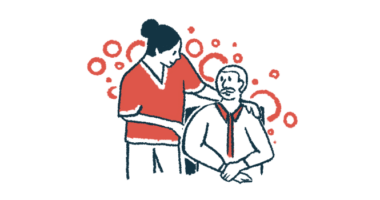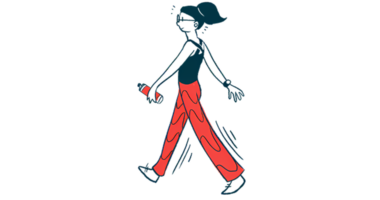3-Month Boxing Program Found to Ease Motor, Nonmotor Symptoms

A tailored three-month boxing exercise program significantly eased both motor and nonmotor symptoms — including depression, anxiety, sleep problems, and pain — in people with early Parkinson’s disease, a new study shows.
While the program’s participants reported an improvement in their motivation, there was no evidence that boxing reduced apathy — which researchers noted is “very common in Parkinson’s disease.”
“It’s something that can be associated with poor quality of life, and can be associated with a lot of caregiver burden,” Roshni Patel, the study’s co-author and adjunct professor of neurology at Rush Medical College, in Chicago, said in a press release.
“Unfortunately, we did not see a significant improvement in apathy,” she said.
According to researchers, this may have been the first study to focus on boxing’s impact on the cognitive issues and other nonmotor symptoms associated with Parkinson’s.
“There are a few studies that looked at boxing and motor symptoms, but none at all that I know of that looked at non-motor symptoms,” Patel said. “Parkinson’s disease is characterized by motor features, and that’s what people think about when they think about Parkinson’s disease. But non-motor features can be just as or even more debilitating than the motor symptoms, and they can be harder to treat. So we particularly wanted to see the effect on people’s non-motor symptoms.”
The results were presented in a poster, titled “A pilot study on the effect of a community-based boxing program on Parkinson’s disease,” at the 2022 Annual Meeting of the American Academy of Neurology.
Overall, the study’s findings support the benefits of exercise for Parkinson’s patients.
“There’s a lot of growing evidence about the benefits of exercise in Parkinson’s,” said Patel. “This is another study that highlights the importance of exercise in the treatment of Parkinson’s disease. It should be a part of our treatment, just like medicines are.”
Funded by the Parkinson’s Foundation and led by researchers at Rush University Medical Center, the study assessed the effects of boxing on both motor and nonmotor features of Parkinson’s.
Boxing is a complex physical activity that involves not only cardiovascular and aerobic exercise, but also balance, hand-eye coordination, and strength training.
“There’s a cognitive component to it, too … if you’re doing different types of moves, and sparring, and things of that nature,” Patel said, adding, “People really like it because it’s fun. … There’s a social aspect and social engagement portion of this, that is good for morale.”
A total of 14 patients with early Parkinson’s (mean age 62.2 years; 57% men) completed the three-month community-based boxing program. The participants had a mean age of 62.2 and 57% were men. All were at stage two of the disease, which is characterized by tremors, rigidity, walking impairments, and poor posture.
The program was tailored for this patient population and held at a local community boxing gym, the Gregory Boxing and Muay Thai, in Des Plaines, Illinois.
Researchers evaluated several parameters at the start of the study (baseline) and after the program’s completion. Among the parameters was patients’ motor function, as determined by the MDS-Unified Parkinson’s Disease Rating Scale part III. This particular parameter was modified, since the evaluation was conducted virtually due to the COVID-19 pandemic.
Additionally, nonmotor symptoms were evaluated by the MDS Non-Motor Rating Scale (MDS-NMS), which includes depression, anxiety, sleep problems, pain, apathy, and memory problems.
Depression and apathy also were evaluated using the Hamilton Depression Rating Scale (HDRS) and the Lilli Apathy Rating Scale (LARS).
The impact of the disease on the participants’ quality of life was assessed using the Patient’s Parkinson’s Disease Questionnaire-39 (PDQ-39); their ability to achieve daily living activities was evaluated by the Schwab and England Activities of Daily Living scale (SE-ADL).
The results showed general motor symptoms were significantly lessened after the three months of boxing.
Several nonmotor symptoms including depression, anxiety, sleep problems, and pain also were significantly reduced. No effects were seen, however, on apathy, general quality of life, or the capacity to undergo daily living activities.
The researchers had planned to follow these patients and evaluate them six months and one year later, but this was not possible due to the COVID-19 pandemic.
Future and longer studies are now necessary to confirm and further evaluate the benefits of boxing, particularly relative to apathy, the researchers said.
“Apathy, in particular, can be difficult to treat with pharmacotherapeutics,” the team wrote.







